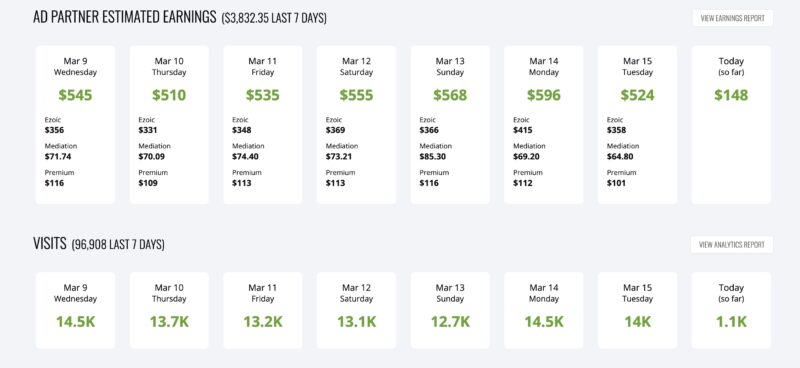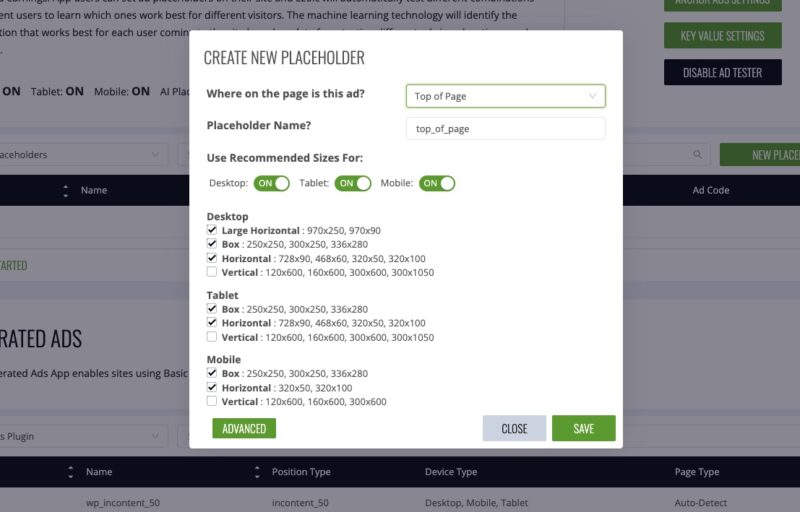Making money online is a relative breeze nowadays. All you need is to set up a website, before then monetizing it by displaying ads. The difficulty, however, shows up when you have to pick an ad provider to monetize with. Who then, would you pick out of Ezoic vs Media.net? Pundits and publishers alike have spoken quite positively of their experiences with both networks.
Between Ezoic vs Media.net, the key focal point is earning you as much ad revenue as possible. Yet, without hindering the user experience, while also catalyzing your site’s organic growth. In addition, they provide publishers with all the tools that they need to empower their businesses, content, and build an audience. That said, would your site be best monetized with Ezoic or Media.net?
Do you value having more granular control, with AI and machine learning to optimize the ads on your site, such as what Ezoic offers? Or, are you more attracted to Media.net’s contextual and programmatic advertising system? To solve this dilemma, let’s take a closer look at Ezoic vs Media.net, just to see which one’s right for you…
What Is Ezoic?
So, let’s begin discussing Ezoic vs Media.net with the former, Ezoic. They’re among the top ad providers out there, and for a good reason. Unlike most other ad networks that rely on using data science models and humans tinkering around to optimize ads on your site. Ezoic’s model automates this entire process through the use of AI and machine learning computation.
It could learn and adapt to the behavior of your site’s visitors, and dynamically alter how ads appear to best gauge their interaction and engagement. This revolves around changing up the ad placement, density, sizing, and type of ads that show up. With that in mind, Ezoic optimizes the ad layout to ensure a higher rate of click-ability, while also cleaning up your site’s UX.
Although it may display many ads at once, it wouldn’t do so with a significant impact on the user experience. Moreover, that same AI and machine learning would then tailor what ads to show for each visitor. What you get in return are high ad revenues and a more engaged audience. In time, that AI and machine learning system will get even smarter with how to manage the ads.
Aside from these, publishers get additional access to other Ezoic-based services, including:
- Leap – A tool that’ll help optimize and speed up your site with prompts and diagnosis on what’s slowing it down.
- Video – If you’d rather host videos on platforms other than YouTube, you can do so with Ezoic. You can then monetize them with Ezoic’s ads, too.
- Mediation – You could monetize alongside Google’s AdSense. If Ezoic finds that you could earn more with AdSense, it’ll show their ads, instead.
- Tag Tester – This will help to optimize a page’s SEO by analyzing and picking the best title tags and URLs to capture organic traffic.
What Is Media.net?
So, what about the latter in Ezoic vs. Media.net? Somewhat similar to Ezoic, Media.net adopts a similarly high-tech approach to determining the best way to show ads on your site. They use what’s known as contextual advertising. In simple terms, Media.net will only display relevant adverts. This ensures that it could more finely target visitors with what they’re looking for.
For example, if your webpage talks about computers, you’ll only see some computer or other tech-related ads from Media.net. Moreover, each of those ads leads to high-paying, top-tier, and premium advertisers, promising you higher ad earnings in return. Combined with contextual advertising, Media.net also has its programmatic bidding to further boost your monetization rates.
Despite all this, Media.net still promises to focus just as much on the user experience. Their ads have been designed to have minimal impact on site performance and page loading times. Taking into account the contextual system that shows your users what’s on their minds then and there, this would significantly impact the interaction and engagement rate of your audience.
Furthermore, there are other specialties and unique features about Media.net, including:
- Ad Types – Media.net offers publishers varying ad units, like video ads, native ads, and display ads, all to help complement your content.
- No Cookies Needed – Their contextual advertising doesn’t require browser cookies to work, and publishers earn just as much despite strict privacy rules.
- Automated Management – Specialists and analysts over at Media.net can take over to manage the ad placements, and automate this process for you.
- Programmatic Bidding – Fully-serviced bidding options make certain that publishers can earn more from ad revenues.
What Are The Differences Between Ezoic Vs Media.net?
Having discussed what Ezoic vs Media.net does and how they work, it’s now time to look at how they differ from one another…
Minimum Traffic
Neither Ezoic nor Media.net has any set requirements for how much traffic a site needs to pull before it could monetize with them. Ezoic has its Access Now program to suit smaller publishers with fewer than 10,000 monthly pageviews. Although, both recommend that you at least have some traffic for optimal results.
Upfront Cost
Both Ezoic vs Media.net is free to sign up and register, with no upfront fees or costs. Ezoic has a 30-day free trial, and once that’s over, you can then switch to a 10% revenue share model for payment. Media.net’s fees and pricing are also quite similar.
Regional Traffic
Ezoic could monetize sites in any language, regardless of where you are in the world. Or, where the majority of your site’s traffic comes from. With Media.net, most of your site’s traffic has to originate from the US, UK, or Canada to qualify.
Approval Time
Ezoic and Media.net are pretty quick to approve your site for monetization. In Ezoic’s case, it’s usually around 1 to 3 days for approval before you can start setting up. With Media.net, it’s somewhere in the middle, roughly 2 days or sometimes sooner.
Integration And Setup
When it comes to getting started and setting things up, it’s much easier on Media.net than it is on Ezoic. In the case of Media.net, a team will review your site to figure out how to design an ideal ad layout. With Ezoic, you’ll mostly have to do this by yourself.
Ad Revenues
While they both try to optimize the ad layout to up your site’s ad revenues, Ezoic still comes out far ahead. In most testimonies, Ezoic earns far higher ad revenues compared to Media.net. Although, the latter is still a better option than using Google AdSense.
Accounts Manager
Among the advantages when opting for either Ezoic vs Media.net is that you get access to a dedicated accounts manager. With Ezoic though, and once your site ranks and grows further, you may even get access to a Publisher Success Manager to share insights.
Loading Times
Embedding any form of advertising will generally slow your webpage down, as it has to load in the ads. However, Ezoic and Media.net have tools and other optimizations that can mitigate that. Hence, ensuring that the adverse performance impact isn’t significant.
Dynamic Ads
Equally, both Ezoic vs Media.net have automated ad placements, and they vary these ads to suit individual visitors. These ad units from both networks feature numerous sizes and designs that you can experiment with.
Additional Tools
When you subscribe to Ezoic, you gain access to a plethora of extra tools that could help you with other aspects beyond monetization. These include optimizing SEO, hastening page load times, or even hosting videos. Media.net’s offerings are more limited to just the ads.
Payment
Both Ezoic and Media.net follow the same 30-day payment window to withdraw ad revenues. This means that, for example, January 2022’s ad revenues will be paid by the end of February 2022, and so on.
Which One Is The Best For You, Ezoic Vs Media.net?
Finally, it all comes down to this… Between Ezoic vs Media.net, which ad provider is the right fit for your website? Naturally, there are numerous factors to consider, although both of them are exceptional platforms. Not only could you earn a lot from ad revenues, but a noteworthy similarity when looking at Ezoic vs Media.net is also the ease of use when it comes to managing those ads.
However, you should stick with Ezoic if your traffic is sourced internationally, or in regions outside of the US, UK, or Canada. Not only does Media.net not support locations besides these, but it’s been noted that Ezoic generally earns you more in ad revenue, regardless of where the traffic came from. Furthermore, Ezoic grants you greater configurability over displaying ads on your site.
Although, Media.net has many strong suits that you might value. It can show ads contextually, which would otherwise be more relevant to your audience. Yet, they also feature similar ease in managing the ad placements as with Ezoic. Another compelling reason to go for Media.net will come into play while setting it up, as it’s far easier to integrate into your site compared to Ezoic.
Overall, you can’t go wrong with either Ezoic vs Media.net. Among the countless other services out there for displaying ads, they promise higher ad revenues, effortless ease of use, as well as an optimal user experience. In addition, a lot of clever computing to maximize ad earnings and boost user interactions. We’d still take Ezoic, but Media.net is no doubt a great alternative.








